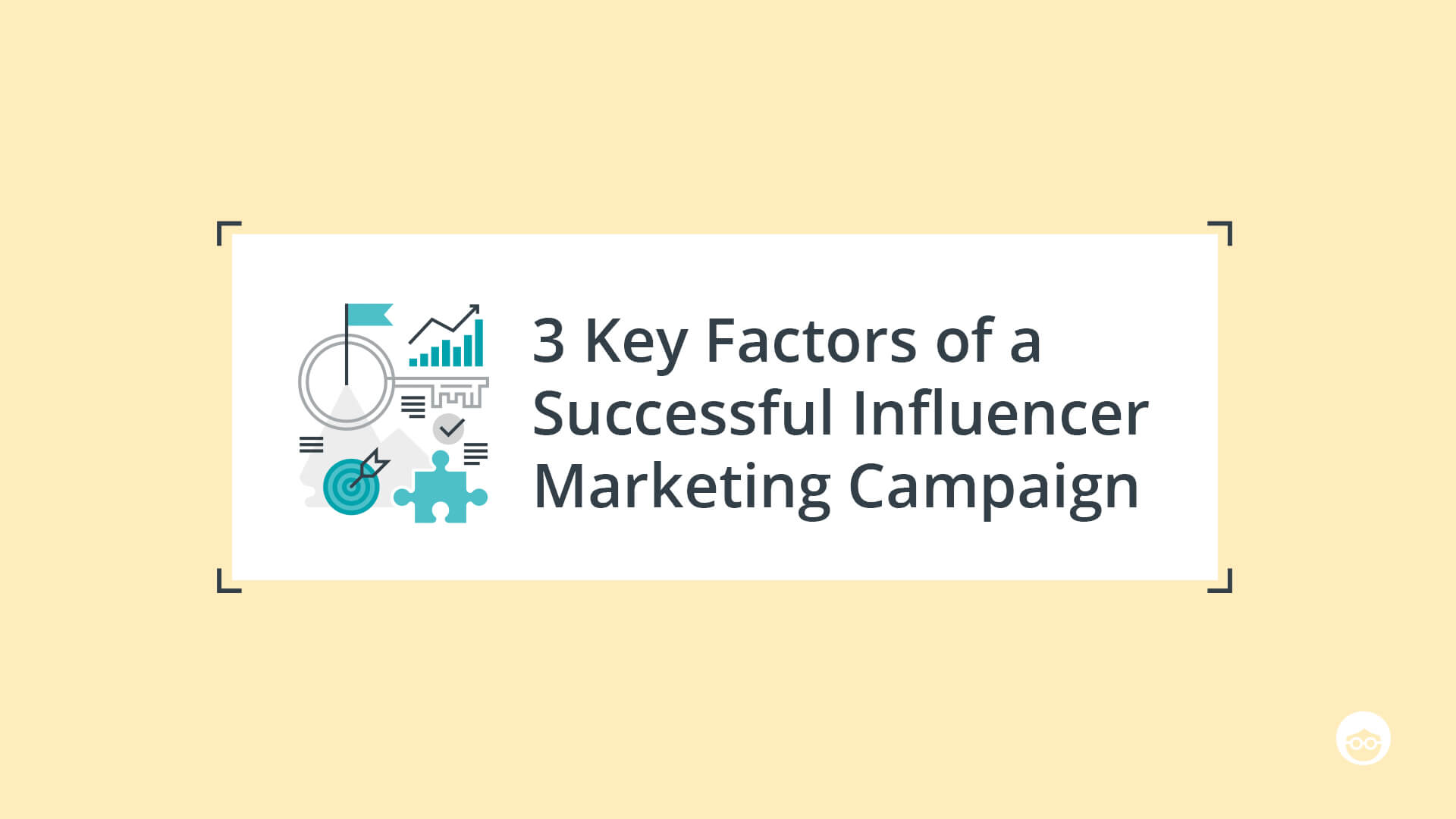3 Key Factors of a Successful Influencer Marketing Campaign

Content marketing and influencer marketing can be closely related (and sometimes lumped together) in the digital space. But there’s a difference. Content marketing can be defined as the creation and distribution of content used to achieve brand’s objectives, such as reinforcing brand identity and driving profitable action from audiences. Influencer marketing achieves the same; however, influencer marketing creates content from the point of view of a trusted source, or influencer, rather than from the brand’s point of view.
Messages from influencers resonate deeply with consumers leading to impressive growth and acceptance of influencer marketing as a campaign strategy. Currently, influencer marketing spend is estimated to be $500 million and based on current growth, will range from $5 to $10 billion by 2020. Influencer marketing adoption rates are high as well, with 81% of brands already working with at least one influencer and 84% of brands planning to develop an influencer marketing campaign in the next 12 months.
Despite widespread adoption of influencer marketing, more than half of all worldwide brands are still struggling to measure the performance of influencer marketing. Whether a campaign’s objective is to reach a new or niche audience, drive conversions, or build buzz about a new product, these three strategies should always be considered.
1. Reach Is Great, But Engagement Is Even Better
One of the biggest faux-pas in influencer marketing is treating reach as the best indicator of a quality influencer. Oftentimes, brand marketers will only hire social influencers based on follower count and other vanity metrics.
Based on our experience, this strategy does not always correspond to campaign success. Rather than focusing on how big an influencer’s audience is and focusing on follower or subscriber count, marketers should instead be examining how engaged an influencer’s audience is and assessing the proper engagement indicators. Influencer engagement metrics, unlike reach, shows that an influencer is able to elicit strong audience participation in his or her following.
Engagement metrics that marketers should be looking at when choosing an influencer vary on the content or platform that an influencer specializes in (i.e. YouTube videos vs. Instagram posts vs. blog entry giveaways etc.). High site visits, views, likes, comments, and shares on content shows that an influencer is creating content that audiences can strongly relate to.
Applying these metrics to an influencer’s individual videos and posts can be a powerful strategy in choosing an influencer. Post-campaign engagement metrics, or metrics that are available once content is live, are represented by clicks, signups, and sales. These specific metrics should be evaluated to give advertisers an idea on whether a post is performing well.
2. Emphasize Creating Shareable Content vs. Overly Branded
Among the most common ways that brand marketers sabotage their own campaigns is placing too many conditions on an influencer’s content. One of the primary reasons marketers enlist a social media influencer is that they are known for creating content that is both marketable and authentic. Influencers are valued and trustworthy sources of information for consumers. They’ve built relationships with their audience that are based on their unique voices.
When brands take control of an influencer’s creative content, the content runs the risk of being stilted and overly branded. Even more, an influencer’s audience can sense even slight changes in content style, jeopardizing an influencer’s authenticity and the campaign’s efficacy. Alternatively, brand marketers should give an influencer creative control and allow them to create content in their own style. While a brand ought to trust its influencers, marketers should be providing touch points on what needs to be included in a piece of sponsored content.
Most significantly, brands should always emphasize creating shareable content. Shareable content is content that people can apply to their lives, their friends’ lives, or to whatever is current. Ideally, shareable content will also be evergreen and utilitarian content. For instance, a product review is less likely to be shared and viewed over a long period of time than a thematic “How-To” video which utilizes a product. Finally, brand marketers can set the content and quality standards to ensure that a piece is well-produced. Great sponsored content will usually result in high levels of impressions, views, comments, shares, and reach — all metrics that demonstrate the efficacy of an influencer campaign.
3. Simple But Powerful: Use A Strong CTA
While marketers should always supply influencers with touch points and campaign messaging, arguably the most important touchpoint is a strong call to action (CTA). There are many ways to include a strong CTA, but CTAs should first and foremost excite an influencer’s audience about the sponsoring brand.
CTAs can take form in an influencer offering a loyalty discount, announcing a giveaway, or a giving simple, upbeat instruction for viewers to further explore a brand. CTAs should be prominent and obvious in the content integration to attract viewers. For example, an influencer should place a CTA at the beginning of a sponsored video, or the CTA should be included in the content’s title.
A brand will determine a CTA, and will at times, ask an influencer marketing agency to help advise on best practices. In our experience, we’ve found that campaigns with discount offers or giveaways were very successful.They not only moved audiences, but also energized the influencers pitching them as well. Influencers are always looking for ways to give back to their fans, and are particularly enthusiastic (and subsequently more apt to become involved) when there is something to give.
In conclusion
The wide variety of social media platforms combined with its selection of influencers can make it easy for marketers to get lost when it comes to influencer marketing. Always remember these tactics and your influencer program will be built on a solid foundation:
- Use engagement metrics as success indicators
- Give influencers creative control on content
- Establish a powerful CTA
What other factors do you think are essential for successful influencer marketing?




![[Event Recap] 3 Highlights from Outbrain’s 2021 Unveil](https://www.outbrain.com/blog/wp-content/uploads/2021/01/OB-Blog-Post-Regular-Thumbnail-Unveil-Recap.jpg)









